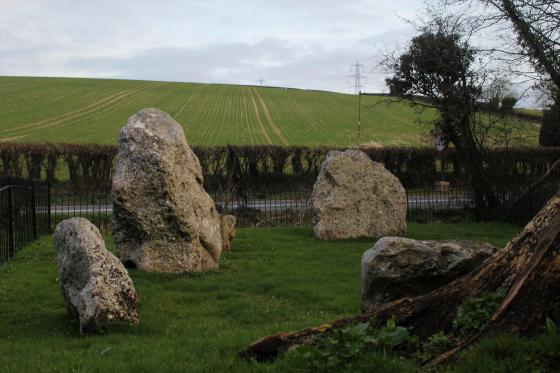Details of long barrow on Pastscape
A long barrow extant as an earthwork and located immediately northwest of Maiden Castle (SY 68 NE 7 and associated records), on the northeast-facing slope of a ridge, overlooking the Frome valley. The barrow is listed by Grinsell as Winterborne Monkton 1 and by RCHME as Winterborne Monkton 3. There is no record of any excavation having been undertaken. Orientated north northwest – south southeast, in 1980 the Ordnance Survey recorded it as a mound 27 metres by 9 metres and surviving to a maximum height of 0.5 metres on the downhill side, with no visible traces of ditches. In 1955, an Ordnance Survey field investigator had described the mound then as being 36 metres long and 18 metres wide, with a ditch 5 metres wide and 0.4 metres deep on the north side. The ditch on the south side was not visible. The higher, broader end was to the southeast where it measured up to 1.7 metres high. Plough damage was already well-advanced, and the mound appeared to have a “heavy chalk content throughout...and at the eastern end there is a sizeable heap of large flint nodules as though a cairn had been disturbed.Among the flints are small pieces of “alien” sandstone conglomerate and fragments of calcined bone”. Air photographs taken in the 1930s appear to show a narrow mound with unusually tapered ends, though this may have been a product of ploughing and other agricultural activity. Scheduled.


























































































































































